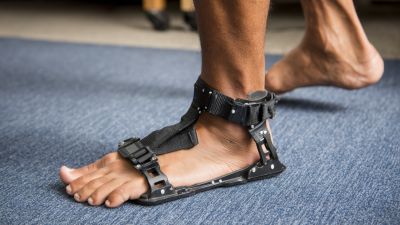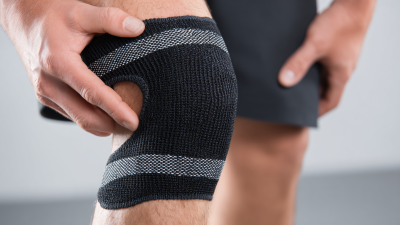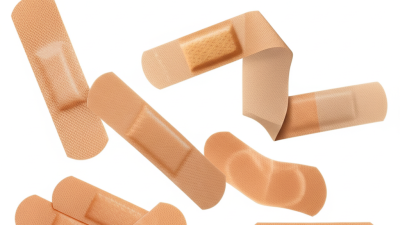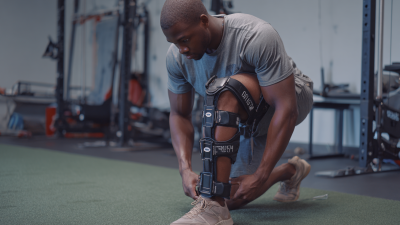What is a Hinged Brace and How Does it Improve Joint Support
In the realm of orthopedic support, the "Hinged Brace" has emerged as a critical tool for enhancing joint stability and mobility. According to a report by the American Academy of Orthopaedic Surgeons, approximately 1 in 7 Americans experience chronic joint pain, which underscores the growing demand for effective support solutions. Hinged braces offer a sophisticated design that combines rigidity and flexibility, allowing for secure joint reinforcement while facilitating a degree of movement essential for rehabilitation and daily activities.

The functionality of hinged braces extends beyond mere immobilization; they provide adjustable support that can be tailored to the specific needs of the user. Research published in the Journal of Orthopedic Research confirms that patients utilizing hinged braces during recovery from knee injuries benefit from improved proprioception and a significant reduction in pain levels. This data highlights the importance of incorporating such devices into treatment plans for joint-related issues, ensuring optimal recovery outcomes and the maintenance of an active lifestyle. As we delve deeper into the mechanics and benefits of hinged braces, we will explore how they can profoundly impact joint support and overall mobility.
Understanding the Basics of Hinged Braces and Their Functionality
Hinged braces are innovative orthopedic devices designed to provide enhanced support and stabilization to injured or weakened joints, particularly in the knees and elbows. These braces utilize a hinged mechanism that allows for controlled movement while limiting excessive motion that could exacerbate injuries. By aligning the joint properly and distributing weight evenly, hinged braces minimize the risk of further damage during physical activity. This dual-action functionality not only helps in recovery but also facilitates a more active lifestyle for individuals.
When considering a hinged brace, it's important to choose the right fit and size to ensure optimal support. A poorly fitted brace can lead to discomfort and ineffective protection. Always consult with a healthcare professional to ensure that the brace is suitable for your specific condition.
Additionally, wearing the brace consistently during activities is crucial for effective joint support. Engage in gentle exercises recommended by your physician to strengthen the muscles around the joint, which can enhance the overall effectiveness of the brace. Remember to check the brace regularly for wear and tear, as a damaged brace may not provide the necessary support it was designed for.
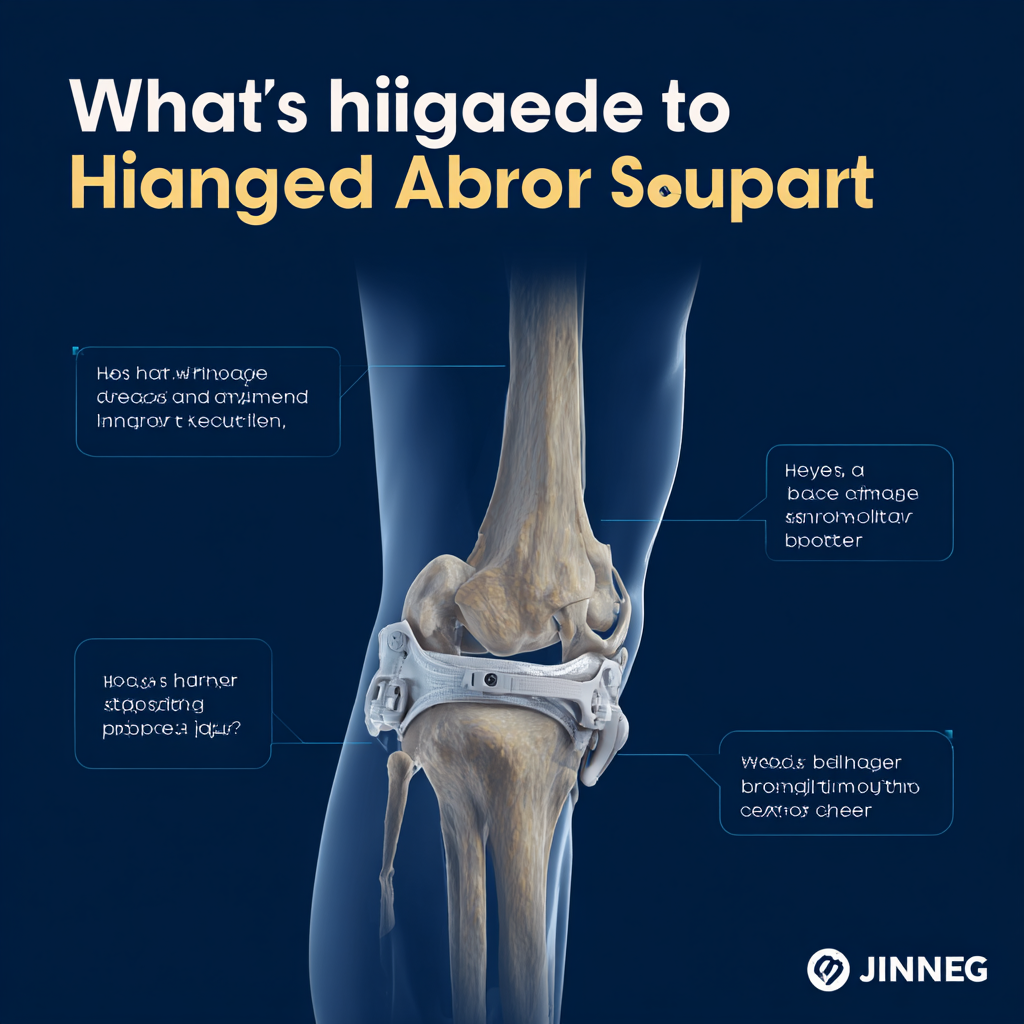
Key Benefits of Using Hinged Braces for Joint Support
Hinged braces are innovative orthopedic devices designed to provide enhanced support and stability to injured or weakened joints. One of the key benefits of using hinged braces is their ability to limit excessive movement while allowing for controlled mobility. This feature is particularly advantageous during the rehabilitation phase, as it helps to protect the joint from further injury while still enabling essential motion and function.
Additionally, hinged braces offer customizable support, often featuring adjustable settings that cater to individual needs. This adaptability means that users can modify the level of support based on their activities or recovery progress, promoting a safer and more effective rehabilitation journey. Moreover, by distributing weight evenly across the joint, hinged braces can help alleviate pain and reduce strain during movement, making them an excellent option for athletes as well as individuals dealing with arthritis or post-surgery recovery.
Comparing Hinged Braces with Other Types of Joint Supports
Hinged braces have emerged as a popular choice for joint support, particularly for those recovering from injuries or managing chronic conditions. Unlike traditional elastic or rigid braces, hinged braces provide dynamic movement, allowing the joint to flex while offering stability. According to a report by the American Academy of Orthopaedic Surgeons (AAOS), ergonomic support devices can improve recovery times by 30% compared to passive support methods. This is primarily due to the balanced support and reinforcement that hinged braces provide, which helps maintain proper joint alignment during movement.
When comparing hinged braces with other support types, such as neoprene sleeves and rigid casts, the differences become apparent. Neoprene sleeves offer warmth and compression but lack the structural support needed for significant joint injuries. Rigid casts limit motion entirely, which can lead to muscle atrophy during prolonged use. A study published in the Journal of Orthopedic Research found that patients using hinged braces reported a 25% increase in overall comfort during rehabilitation compared to those relying on rigid supports. Thus, the versatility and adaptive support of hinged braces stand out, providing a middle ground that promotes healing while allowing for controlled movement.
Factors to Consider When Choosing a Hinged Brace
When choosing a hinged brace, several factors play a critical role in ensuring optimal joint support and comfort. First, it’s essential to consider the specific injury or condition being addressed. Different injuries may require varying levels of support and motion control. For instance, a brace designed for a ligament tear might have more rigid hinges to restrict movement, while one for a mild sprain may allow for more flexibility.

Another important factor is the size and fit of the brace. A properly fitting brace not only enhances comfort but also provides the necessary support. It’s advisable to measure the joint and select a brace that adheres closely to the manufacturer’s size guidelines. Additionally, choosing a brace with adjustable straps can help customize the fit, ensuring it stays securely in place during activity. Lastly, one should consider the material and breathability of the brace, especially if it will be worn for extended periods, as this can impact overall comfort and skin health.
Tips for Proper Use and Maintenance of Hinged Braces
Hinged braces are commonly used to provide enhanced support and stability for joints, especially during recovery from injuries. To ensure they function optimally, proper use and maintenance are crucial. One important tip is to always adjust the brace to fit snugly without restricting circulation. This can optimize the support while ensuring comfort during movement.
Regular cleaning of the hinged brace is essential for maintaining hygiene and prolonging its lifespan. After each use, wipe down the brace with a damp cloth to remove sweat and dirt. For deeper cleaning, refer to the manufacturer’s guidelines. Additionally, inspect the brace regularly for any signs of wear or damage, such as fraying straps or loose hinges, to prevent further injury.
Finally, always be mindful of the activity level while using a hinged brace. Gradually reacquaint the joint with physical activity and consult a healthcare professional for personalized recommendations. This proactive approach not only aids recovery but also enhances the overall efficacy of the hinged brace.
What is a Hinged Brace and How Does it Improve Joint Support
| Aspect |
Details |
| Definition |
A hinged brace is an orthopedic device designed to support and stabilize a joint while allowing a degree of movement. |
| Common Uses |
Primarily used for repairing ligaments, post-surgical recovery, and managing joint instability. |
| Joint Support Improvement |
Provides stability and limits excessive movement that can lead to further injury. |
| Types of Hinged Braces |
Knee braces, ankle braces, and elbow braces are common types, each designed for specific joints. |
| Proper Use Tips |
Ensure proper fitting, follow medical guidance, and gradually increase activity levels while wearing. |
| Maintenance Tips |
Regularly clean the brace, check for wear and tear, and store in a cool, dry place. |

Home
About Us
Products
Videos
Download
News
FAQ
Blog
Contact Us



